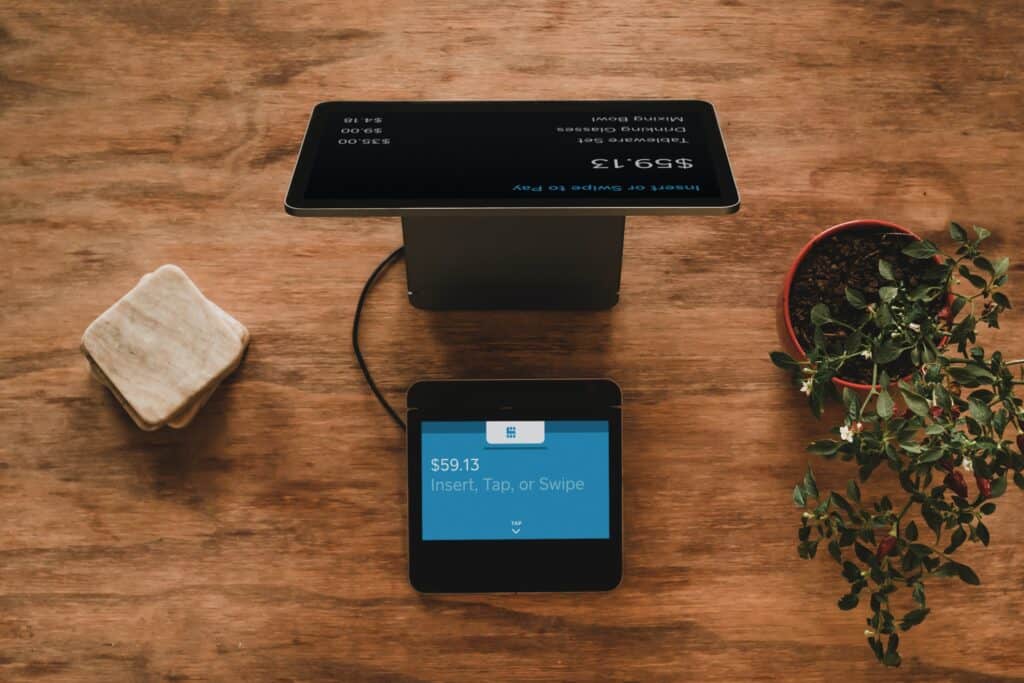How to Boost Cell Signal in the Office
Posted on 6/13/2023 by Meredith Pond

Today you’ll learn how to boost cell signal in the office. After all, small and medium-sized businesses are the backbone of our economy. The current business environment means that effective digital transformation is not only key to growth and success, but critical for your business’ survival. Mobile connectivity is at the center of this digital transformation. Here’s a look at why your small business needs a strong cellular connection and how you can boost cell signal in the office or other business building.
Why you need to boost cell signal in the office
Now more than ever, day-to-day business activities require constant cellular connection. Mobile devices are ubiquitous internal operations and the customer experience because the constant connectivity keeps goods, sales, productivity, and profits flowing. Often, this will require you to boost cell signal in the office.
Whether it’s a legal office, a retail store, health practice, or warehouse, your small business must stay connected, all the time, from anywhere. If devices, employees, and customers can’t connect, nothing gets done.
Connected technology, real-time data, and always-on communication is and always will be the business standard.
As the world responded to a global pandemic beginning in 2020, small businesses developed responses of their own. Even for local brick-and-mortar stores, these changes drove an evolution in how they accepted orders, collaborated with their teams, met with clients, and served their customers.
The silver lining of being forced to think outside the box is that many of those evolutions became permanent improvements in how you do business today.
These include:
- Supporting virtual payment options
- Moving products and services online
- Shifting communications to video chat and conference calls
- Offering curbside pickup for online orders
- Expanding same-day delivery services
- Adopting mobile POS solutions for contactless transactions
- Implementing self-serve ordering and self-checkout stations
- Providing contactless visitor check-in and registration
- Using QR codes for digital menus, mobile check-in, and more
What does this all mean for the future of small and medium businesses? It means consumers will continue to expect more from businesses today than they did before – and they want it faster. It means keeping essential technology online and connected is more important than ever.
In short, it means a strong, reliable network is non-negotiable for every small business.
Do you have the signal strength you need?
Approximately 30 percent of small businesses experience cell signal issues that cause disruptions. Considering that there are approximately 33.2 million small businesses in the United States, we estimate that at least 9 million of them regularly deal with problems due to their cell signal strength. They simply must boost cell signal in the office or other business building.
What causes poor signal strength?
Cell phone dead zones in office buildings are caused by two primary factors: the building’s proximity to cell towers and the construction materials used.
Cellular signals are transmitted from cell towers and travel through the air to reach mobile devices. In urban areas, cell towers are typically scattered across the landscape, ensuring users are within reasonable proximity to a tower. Therefore, dead zones in rural areas are often a result of limited tower coverage, as it may not be practical for mobile providers to install towers for only a few scattered residences.
On the other hand, dead zones in cities predominantly stem from the buildings themselves. Thick construction materials, notably concrete and steel, can obstruct cell signals from penetrating the building. Even insulated glass can diminish signal strength. Obstacles like trees, mountains, and neighboring buildings can also impact the signal quality experienced by tenants.
Owning a business is hard enough. The last thing you and your employees need to worry about is connecting to the people and devices that keep your business running. If you’ve been struggling to keep up with customer demands and adapt to new technology because of spotty mobile coverage, you’ll be glad to know that you can take steps today to improve it.
6 ways to boost cell signal in the office
If you’ve been struggling with poor cell signal, then it’s time to find a solution. Here we’ll outline some quick tips for improving your cell signal quality in a pinch. Then we’ll wrap things up with a permanent solution.
1. Identify dead zones.
It’s hard for business owners to conduct business when calls are continually being dropped or not connecting in the first place. Dreaded dead zones — areas with little to no cell signal — are often the reason behind dropped calls.
There are different reasons dead zones occur. For offices or shops located right in the heart of a big city, the culprit could be a large concrete or brick building blocking the signal from the nearest cell tower. For those who are located in a rural or sparsely populated area, cell towers are more spaced out. Your distance from the nearest tower could be the reason for your lack of coverage.
If there are specific areas where your small business experiences dead zones, try to keep track of where they are. While just knowing the location of these dead zones won’t solve your problems, you’ll at least know not to wander into that area while you’re trying to use your phone. You’ll also be more aware of areas that could benefit most from a cell signal booster in the future. This can actually eliminate dead zones as you boost cell signal in the office.
2. Reduce network traffic.
If you’ve ever tried to post a photo, download a large file, or jump on a video call during certain times of the day (particularly in well-populated areas), you might have noticed slower download speeds, buffering, or dropped connections. This may be due to increased network traffic. In other words, many other people are also trying to connect to the same network, and it’s creating a bottleneck.
While you can’t control when other people are using the network, you may be able to plan your calls, downloads, and streaming around these high-traffic times. Since this approach is likely to interrupt important business, it’s not an ideal solution to cell signal problems. You shouldn’t have to adapt your business schedule to network traffic, should you?
3. Go outside.
Building materials like concrete, steel, and energy-efficient glass block cell signals. So to get better reception, you may need to step outside. By reducing the obstructions between your phone and the cell tower, your reception will usually improve.
Again, this will work in a pinch for phone calls, but leaving your desk to take calls is inconvenient. It comes with background noise and weather complications, and ultimately won’t solve the problem across multiple devices and users.
4. Find the nearest cell tower.
When you know where the nearest cell tower is located, you’ll know which direction your signal is coming from. Once you know that, you can experiment to locate better signal inside your office or other workspace. For example, you could move your office to the side of the building that’s nearest the tower to see if your cell reception is better there.
The free weBoost app will help you locate the nearest tower, among other handy features like helping you install a signal booster and testing your signal strength.
5. Try WiFi calling.
While this doesn’t do anything to increase your cell signal, it may improve your calling capability. Newer smartphones allow native WiFi calling. If you have solid WiFi coverage in your office or workspace, that network can help compensate for spotty cellular coverage. Again, WiFi calling isn’t a solution and has several drawbacks, including:
- Limited range, maxing out around 300 feet depending on your setup
- Connectivity can suffer when other network traffic competes with internet bandwidth
- Call data is transmitted over the internet, making it less secure and private
- Doesn’t work in a power outage, making it unreliable in an emergency
- Uses quite a bit of data and counts toward your cellular data usage (check with your carrier for details)
- Only works for phone calls (and messaging, depending on your carrier/device)
6. Invest in a cell phone signal booster for office buildings.
While you can troubleshoot cellular connectivity issues yourself, none of these options offer a long-term solution. You likely cannot go without robust and reliable cellular connectivity for long. You need a solution, so you can adapt to new technologies and customer demands.
Reliable cellular connections for your success

Rather than change your business activities to accommodate a poor network, focus on adapting your space and connectivity to better serve you and your customers. An in-building cell signal booster can solve the issue permanently, improving the coverage in your building without making you jump through hoops.
In an increasingly connected world, weBoost for Business cell signal boosters can keep your businesses connected, so you can focus on what you do best.
As our most powerful business solution, the weBoost Installed | Office 200 is engineered to improve cell signal for up to 15,000 sq. ft.* Each kit includes an outside antenna, two inside antennas, and a commercial-grade booster.
Paired with certified, professional installation, this is the most cost-effective, turnkey solution for small businesses to boost cell signal in the office or other business building. Because it’s 5G-compatible, it will work beyond the next decade to provide the fastest speeds on every carrier and device.
Your business deserves the best, and the weBoost Installed | Office 200 is our best, most powerful cell signal booster solution for business. Other business options include Office 200 and Office 100. Both are designed for self-installation and can cover a business of up to 10,000 square feet* and 8,000 square feet,* respectively.
As your business works to meet growing digital demands, our products can help power your digital transformation. Shop our weBoost for Business product lineup to boost cell signal in the office. weBoost has a lasting connectivity solution for your business.
* Coverage claims are based on estimates and can vary depending on factors such as outside signal strength, building construction, and building layout. Wilson Electronics’ Office products are the best performing cell signal boosters for smaller buildings. For larger buildings exceeding 15,000 square feet, we recommend the WilsonPro product lineup for optimal in-building cell signal performance.




